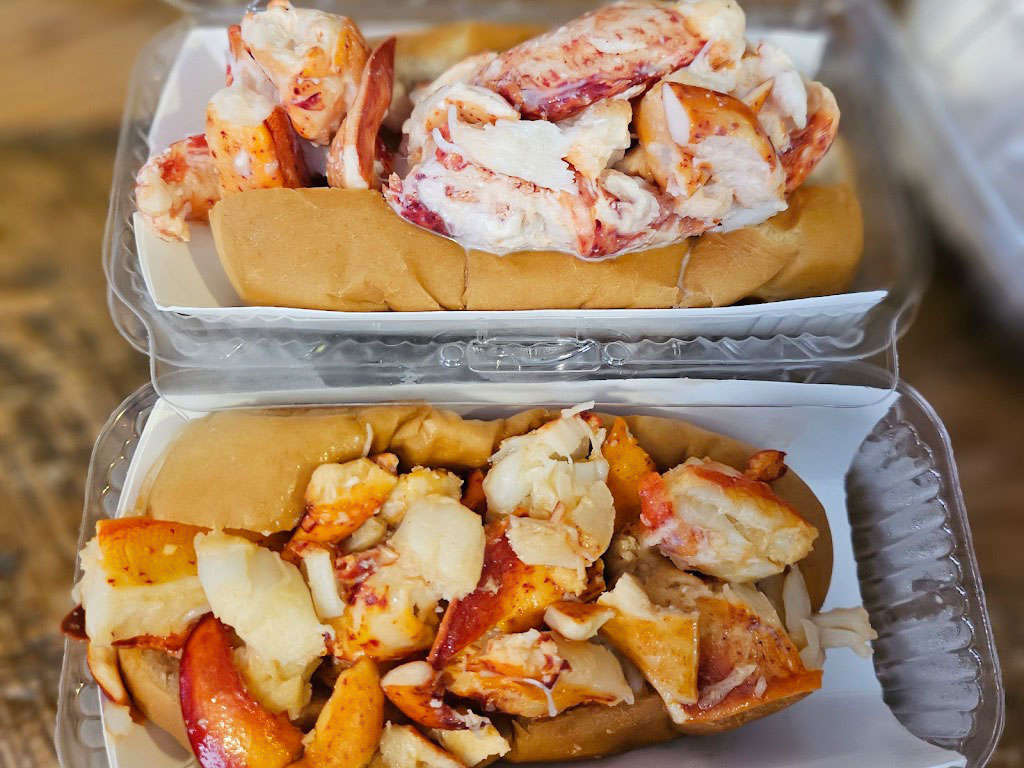Few culinary delights capture the essence of New England quite like the Boston lobster roll. This iconic dish, with its succulent lobster meat nestled in a buttery, toasted roll, offers a taste of the sea that’s both luxurious and comforting.
It’s no wonder that food enthusiasts from around the world flock to Boston just to savor this regional specialty.
Creating the perfect Boston lobster roll at home might seem daunting, but with the right ingredients and a simple recipe, anyone can master this classic.
Whether you’re a seasoned cook or a kitchen novice, this guide will walk you through each step, ensuring your lobster roll is as authentic and delicious as those found in the heart of Boston.
Get ready to impress your family and friends with a dish that’s both easy to prepare and irresistibly tasty.
What Is the Best Lobster For Boston Lobster Roll?
Fresh lobster is essential for a Boston lobster roll. New England lobsters, also known as Maine lobsters, are preferred for their rich, sweet meat.
These lobsters typically weigh between 1 and 1.5 pounds. Selecting live lobsters ensures optimal freshness and flavor. Lobsters caught off the coast of Boston or Maine provide an authentic taste.
Steaming preserves the lobster’s natural juices better than boiling. Avoid overcooking to maintain tenderness. The meat should be opaque and firm. After cooking, remove the meat from the tail, claws, and knuckles.
Frozen lobster is an alternative if fresh isn’t available, but prioritize high-quality brands. Thaw frozen lobster meat slowly in the refrigerator. Avoid microwave thawing to prevent texture compromise.
Essential Ingredients for Making Boston Lobster Roll

To craft an authentic Boston lobster roll, focus on using high-quality ingredients. The following subsections detail the core components essential for this iconic dish.
Fresh Lobster Meat
Fresh lobster meat serves as the centerpiece of any Boston lobster roll. Opt for live New England lobsters, ideally Maine lobsters, weighing between 1 and 1.5 pounds.
This weight range offers the best balance of flavor and tenderness. For those who can’t access live lobsters, select high-quality frozen lobster meat, ensuring a slow thaw in the refrigerator to maintain optimal texture.
Key Seasonings and Add-ins
Key seasonings and add-ins enhance the lobster’s natural flavors.
A common mixture includes the following:
- Mayonnaise: Provides creaminess.
- Celery: Adds crunch.
- Lemon Juice: Contributes brightness.
- Salt and Pepper: Ensures seasoning is balanced.
Include optional ingredients like fresh chives, Old Bay seasoning, or a dash of hot sauce based on personal preference. These elements work together to elevate the overall flavor profile of the lobster roll.
Step-By-Step Guide to Making Boston Lobster Roll
Creating an authentic Boston lobster roll involves several key steps to ensure the flavors come together perfectly.
Follow this guide for the best results:
Preparing the Lobster Meat

For optimal flavor, steam fresh lobsters weighing between 1 and 1.5 pounds for 10-12 minutes until the shells turn bright red.
Remove meat from the claws, knuckles, and tail, then dice into bite-sized pieces. If using frozen lobster, thaw it slowly in the refrigerator to preserve texture and taste.
Mixing the Lobster Salad

In a large bowl, combine 1 pound of lobster meat with 1/4 cup mayonnaise, 1/4 cup finely chopped celery, 1 tablespoon lemon juice, salt, and pepper to taste.
Stir gently to coat the lobster without breaking it. Optional ingredients like 1 tablespoon chopped chives, a pinch of Old Bay seasoning, or a splash of hot sauce can be added to enhance the flavor.
Choosing and Toasting the Perfect Bun

Split-top rolls work best for Boston lobster rolls, offering a soft inside and a crisp, buttery exterior. Brush the sides of 4 buns with melted butter and toast them in a skillet over medium heat until golden brown, approximately 2-3 minutes per side.
Assembling the Lobster Roll

Fill each toasted bun with a generous amount of the prepared lobster salad, ensuring even distribution of meat and dressing. Serve immediately with a side of chips or cole slaw for a classic Boston experience.
What Makes Boston Lobster Roll Unique?
The Boston lobster roll is a quintessential New England dish that stands out for its simplicity, quality ingredients, and distinctive flavor profile.
Its uniqueness lies in several key elements that combine to create an iconic and beloved culinary experience:
Fresh New England Lobster
At the heart of the Boston lobster roll is the lobster itself. The lobster used is typically the Maine lobster, known for its sweet, succulent meat.
New England lobsters are preferred due to their high quality and rich flavor. The lobster is usually steamed, not boiled, to preserve its natural juices and tenderness.
This focus on using fresh, local lobster is what sets the Boston lobster roll apart from other seafood sandwiches.
Simple Yet Flavorful Preparation
The Boston lobster roll is celebrated for its simplicity. The lobster meat is the star of the dish, and the preparation emphasizes its natural sweetness.
Typically, the meat is mixed with a small amount of mayonnaise, a bit of lemon juice, and sometimes a touch of celery for crunch.
This minimalistic approach ensures that the flavor of the lobster remains front and center, with just enough seasoning to enhance, not overshadow, its natural taste.
The Classic Split-Top Roll
The choice of roll is crucial to the lobster roll’s uniqueness. The traditional Boston lobster roll is served in a split-top hot dog bun, which is lightly toasted on the outside.
This type of roll is preferred because its shape and texture provide a perfect vessel for holding the generous amount of lobster meat. The toasting adds a delightful crunch and buttery flavor that complements the tender lobster meat.
Regional Variations
While the core elements of a Boston lobster roll remain consistent, there are regional variations that add to its uniqueness.
In Boston, the roll is often served with a simple lobster salad mixture, while other areas in New England might include additional ingredients like lettuce or herbs. These variations reflect local tastes and preferences, adding a regional touch to the classic.
Seasonal and Local Influence
The Boston lobster roll is deeply connected to the seasonal availability of lobsters in New England. Lobster season typically runs from late spring to early fall, and this seasonal aspect ensures that the lobster used is at its peak of freshness.
The connection to local fishing practices and the region’s maritime heritage further enhances the dish’s authenticity and charm.
A Symbol of New England Cuisine
The Boston lobster roll embodies the essence of New England cuisine—simple, high-quality ingredients prepared with care.
It reflects the region’s rich maritime history and culinary traditions, making it more than just a sandwich but a symbol of local culture and pride.
The lobster roll is often enjoyed in casual settings, from seafood shacks to upscale restaurants, embodying the relaxed yet refined nature of New England dining.
Frequently Asked Questions
What makes Maine lobsters ideal for lobster rolls?
Maine lobsters are prized for their sweet, tender meat, which is why they are preferred for making lobster rolls. Using lobsters weighing between 1 and 1.5 pounds ensures optimal flavor and texture.
How should frozen lobster be thawed for the best results?
Thaw frozen lobster slowly in the refrigerator for the best texture. Quick thawing can lead to a rubbery consistency, which is less desirable for a lobster roll.
What types of buns are best for lobster rolls?
New England-style split-top hot dog buns are ideal for lobster rolls. These buns have cut sides which, when toasted, provide the perfect balance of softness on the inside and crispness on the outside.
Can lobster rolls be prepared in advance?
Yes, you can prepare lobster rolls ahead of time. For best quality, assemble the rolls shortly before serving to maintain the freshness and texture of the ingredients.
Should a lobster roll be served hot or cold?
A traditional Boston lobster roll is served cold or chilled. This serving method enhances the authentic taste and texture, balancing the softness of the bun with the freshness of the lobster salad.
Conclusion
The Boston lobster roll is a true culinary gem that captures the essence of New England with its simple yet sophisticated flavor profile.
By focusing on fresh Maine lobster and a straightforward preparation, this iconic dish showcases the rich maritime heritage of the region.
The use of a split-top roll, toasted to perfection, complements the tender lobster meat, creating a delightful contrast in textures.
Whether you’re preparing it at home or enjoying it at a local seafood shack, the Boston lobster roll stands out for its quality ingredients and timeless appeal.
Its balance of flavors and ease of preparation make it a beloved classic that continues to attract food enthusiasts from near and far.
Embrace the charm of New England cuisine with this delectable and authentic dish, and savor a taste of Boston with every bite.
Timothy Russell Dewart